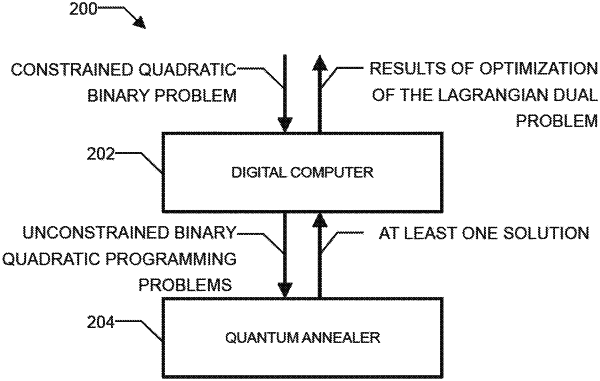| CPC G06F 17/11 (2013.01) [G06N 5/01 (2023.01); G06N 10/00 (2019.01)] | 20 Claims |

|
1. A method for solving a computational problem comprising a Lagrangian dual of a binary polynomially constrained polynomial programming problem, the method comprising:
(a) providing, at a digital computer, said binary polynomially constrained polynomial programming problem;
(b) using said digital computer to obtain an unconstrained binary quadratic programming problem representative of a Lagrangian relaxation of said binary polynomially constrained polynomial programming problem at a set of Lagrange multipliers;
(c) using said digital computer to direct said unconstrained binary quadratic programming problem to a binary optimizer over a communications network for executing said unconstrained binary quadratic programming problem;
(d) using said digital computer to obtain from said binary optimizer at least one solution corresponding to said unconstrained binary quadratic programming problem;
(e) using said digital computer to generate an updated set of Lagrange multipliers using said at least one solution corresponding to said unconstrained binary quadratic programming problem; and
(f) using said digital computer to output a report indicative of at least one solution of said binary polynomially constrained polynomial programming problem based on said updated set of Lagrange multipliers.
|